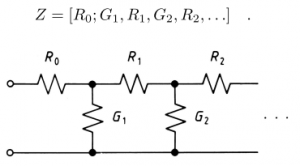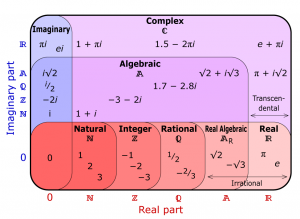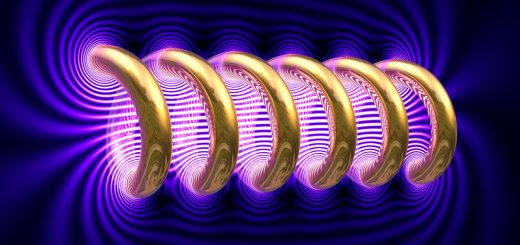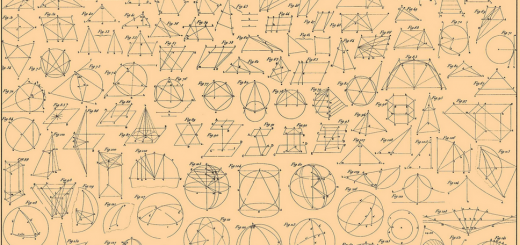A Functional History of Numbers (1 of 3)
Ten years ago a dear friend of mine gave me a copy of Earl W. Swokowski’s 6th edition of Calculus (now out of print). The book contains several short historical sketches called “Mathematicians and Their Times” attempting to show a more human side of mathematics in a hope that these brief introductions will whet the appetites of readers to explore the fascinating history of mathematics on their own. I really enjoyed reading about:
- The life, and horrible death, of the first (known) woman mathematician Hypatia,
- The dreams of René Descartes who created Analytic Geometry to join algebra and geometry,
- The shyness of the great mathematician Pierre de Fermat who didn’t have a degree in mathematics.
- The bitter controversy that arose concerning the discovery of calculus between Newton and Leibniz that drove a wedge between British and Continental intellectual communities, hampering the development of calculus.
- The disturbing jealousy in the Bernoulli family of mathematicians leading to name calling between brothers and Johann Bernoulli expelling his own son from home after awarded the French Academy of Sciences prize.
- The phenomenal memory of Leonhard Euler and ability to concentrate on difficult problems while surrounded by 13 playing children and being blind for 17 years! He introduced or established the use of many common mathematical notations and discovered the “mystical formula” e^{\pi i}+1=0 linking the five most significant numbers in mathematics.
Since then I use the same technique in lectures I give to my students to catch their attention; that is one goal of this post. However, another important goal is to link Geometric Algebra to mathematics on the fundamental level of numbers. Here I briefly describe the history of numbers with emphasis on their functional role in mathematics, science, and engineering to put the computational role GA can play into perspective.
How to Count Sheep and Build Pyramids
The first functional use of numbers in human history was, naturally, to count and compare items for trading and regularizing society. Creating the wonders of the ancient world and accumulating impressively accurate calendars and astronomical observations certainly required advanced numerical skills. Some advanced societies in ancient times (the ancient Egyptians, Babylonians, Chinese, and Indians for example) required a symbolic form of numbers that can represent quantities efficiently while doing arithmetic1.
Greek mathematics, on the other hand, was founded on geometrical ideas, like lengths, areas, and volumes, that left no room for negative numbers, for example. They didn’t use anything similar to real numbers in proofs and logical arguments because they represented magnitudes by lines or areas constructed geometrically. They practically avoided irrationals using this technique2. Irrational numbers appear in even the simplest sorts of measurements, as the Pythagoreans discovered when they found that the diagonal of certain geometric figures may be incommensurable with their sides. This discovery upset the conventional mathematical wisdom of the time, and the penalty was death for those who revealed the secret3. The Greek were horrified by the implications of this discovery that they took a step backward. Where the Pythagoreans claimed the unity of numbers and geometric extension, the later Greeks denied it. Hence, one could not associate numbers with lengths. This caused an unfortunate split between the disciplines of geometry, which dealt with points and lines (extension), and algebra, which dealt with numbers4.
The most important advancements of these ancient times, negative numbers, the decimal place-value system, and the use of zero, were made by the Indian mathematicians5 and then translated, used, and spread to renaissance Europe 1000 years later by the Islamic civilization. A surprising fact I came across is that negative numbers did not begin to appear in Europe until the 15th century when scholars began to study and translate the ancient texts that had been recovered from Islamic and Byzantine sources6. European mathematicians resisted the concept of negative numbers until the 17th century and some referred to them as “absurd quantities” 7.
The main point that remains constant when reading the history of numbers is: a number system is advanced by the needs of civilization and, at the same time, civilization is advanced by the development of its number system. The concept of a number is practically the fundamental abstraction of all mathematics and science.
Rational Laws of Inheritance
The next important function for numbers in human history was to compare ratios of units. The use of ratios motivated the invention of algebra in the form of equations in one unknown that when found results in a rational number. Historically, the terms algebra and algorithm originate from the same source: the book “Kitab al muhtasar fi hisab al-gabr w’al-muqabalah” by the Muslim scientist Abu Ja’far Mohammed ibn Musa al-Khorezmi compiled at the academy of science in Bagdad in the ninth century – uses “al-gabr” and “muqabalah” to describe symbolic transformations and term reductions respectively, which are performed to solve algebraic equations9. Algorithmic manipulation of symbolic algebraic expressions remained to be the major task of algebra about until the end of the nineteenth century. At the beginning of the twentieth century, this method was amended and shadowed by developments in abstract algebra. There, the main interest is focused on formal investigations of algebraic structures derived from axioms. This structural algebraic method has taken over considerable parts of mathematics nowadays10.
As in the case of the decimal system, zero and other ancient advancements, the Islamic civilization translated, developed, and applied these mathematical concepts for hundreds of years until modern European civilization took place. The foundation and soul of the Islamic civilization is the Revelation in its two forms: Qur’an and Sunnah. The rules for inheritance11 are accurately specified in the revelation but require some degree of mathematical sophistication to be computed correctly. Such rules were the main reason behind the widespread use of rational numbers and the development of algebra back then12. As stated in one article13:
Perhaps one of the most significant advances made by Arabic mathematics14 began at this time with the work of al-Khwarizmi, namely the beginnings of algebra. It is important to understand just how significant this new idea was. It was a revolutionary move away from the Greek concept of mathematics which was essentially geometry. Algebra was a unifying theory which allowed rational numbers, irrational numbers, geometrical magnitudes, etc., to all be treated as “algebraic objects”. It gave mathematics a whole new development path so much broader in concept to that which had existed before, and provided a vehicle for future development of the subject. Another important aspect of the introduction of algebraic ideas was that it allowed mathematics to be applied to itself in a way which had not happened before.
Although Arab mathematicians are most well known for their work on algebra, number theory, and number systems, they also made considerable contributions to geometry, trigonometry, and mathematical astronomy15. The advancement of the number concept, and mathematics in general, by the Islamic civilization enabled remarkable achievements in all aspects of science and technology and directly affected all the following development of mathematics in the last 400 years16 17. A more fundamental influence of the Islamic civilization on the scientific knowledge of the human race is clearly stated by Robert Briffault in his 1919 book “The Making of Humanity” (publicly available for download here):
The debt of our science to that of the Arabs does not consist in startling discoveries or revolutionary theories; science owes a great deal more to Arab culture, it owes its existence. The ancient world was, as we saw, pre-scientific. The astronomy and mathematics of the Greeks were a foreign importation never thoroughly acclimatized in Greek culture. The Greeks systematized, generalized and theorized, but the patient ways of investigation, the accumulation of positive knowledge, the minute methods of science, detailed and prolonged observation, experimental inquiry, were altogether alien to the Greek temperament. Only in Hellenistic Alexandria was any, approach to scientific work conducted in the ancient classical world. What we call science arose in Europe as a result of a new spirit of inquiry, of new methods of investigation, of the method of experiment, observation, measurement, of the development of mathematics in a form unknown to the Greeks. That spirit and those methods were introduced into the European world by the Arabs.
Caught in the Field
Any serious study of the universe reveals a fascinating fact: periodic patterns of discrete nature are everywhere. Number theory18 has captured the attention of the best mathematical minds of history for centuries. The research done in this area by great mathematicians like Euler, Gauss, and Riemann, has shown that it is not only beautiful and fascinating, but intimately connected with many other mathematical subjects like analysis, algebraic geometry, and topology. Many concepts in group theory and abstract algebra are in fact generalizations of the properties of integers that have originated from the work of 18th and 19th-century mathematicians in number theory19. Division of integers (resulting in rational numbers) and properties of prime numbers can be studied using the modulus operation. When you are doing a modulus operation (Mod n), you are basically dealing with a periodic function that goes from 0 to n-1 and then repeats itself all over again. That gave rise to one important abstraction in mathematics: The Finite Field. In this way, number theory helps us define periodic properties of systems that are concerned with whole or rational numbers. This is directly related to modern applications in cryptography20, error correcting codes21, and simulation22.
One of the overriding problems in contemporary computing is the accumulation of rounding errors to such a degree as to make the final result all but useless. The currently dominant computational number system in is the IEEE Standard for Floating-Point Arithmetic; a very error prone system as we will see in part 3 of this functional history of numbers. Using finite fields and number theory we can arrive at clever ways for performing fast, error-free digital computations based on Farey fractions and the Chinese remainder theorem23. Another approach is by using p-adic Arithmetic, a counter-intuitive arithmetic system24, as a base for fast error-free computations as a possible alternative for the floating-point numbers25.
The fact that number theory has few direct applications in engineering is unfortunate but understandable. Number theory is indeed like a queen that seldom interact with the commoners directly, nevertheless influences the whole kingdom by its rulings.
Continuum: Imagining The Real Numbers
The set of real numbers rests by all means at the foundation of modern mathematical activity, theoretical and applied. In modern days the word “number” is almost equivalent in our minds to “real number”. The main function of real numbers is to model the concepts like “continuum” and “continuous motion” that have always been present in the minds of all mathematicians and scientists, ancient and modern.
I’m no mathematician, but as an engineer, I’ve always struggled with irrational and transcendental real numbers. These numbers are “results of infinite processes” that can only be expressed symbolically like \pi, e, and \sqrt{2}, or represented approximately as decimals with finite precision; something is definitely bothering about this class of elusive numbers26. During high school, to my surprise, I read about paradoxes resulting from the concept of “continuous real number line” and “uncountable infinite sets” like the Banach–Tarski paradox. That led me later to some articles questioning the “reality of real numbers“; some made by Turing himself27 on computable numbers. Recently I discovered the tangential thoughts of N.J. Wildberger about the difficulties with real numbers:
A hundred years ago, the notion of the “continuum” appeared intuitively straightforward, but it was difficult to pin down precisely. The Greeks had struggled with irrational numbers, but the decimal number approach of Simon Stevin in the 16th century seemed reasonable, especially considering that in practice the further digits beyond the three dots in pi=3.14159263… are hardly of practical significance. Great mathematicians like Newton, Euler, Gauss, Lagrange and others were always interested in a combination of applied questions (physics and astronomy mostly) along with more theoretical questions. In the later part of the nineteenth century an increasing preoccupation with trying to pin down the fundamentals of analysis led to both more careful definitions but also to the realization that the default view of irrational numbers as infinite decimals was shaky.
However with the advent of relativity theory and quantum mechanics, the concept of the continuum again became murky: if time is relative and perhaps finite in extent, and space has an inherent graininess which is not infinitely divisible, then what exactly are we modelling with our notion of the ‘infinite number line’?
While engineers and scientists viewed real numbers primarily as “decimals which go on till we don’t care anymore”, nineteenth century mathematicians introduced the ideas of “equivalence classes of Cauchy sequences of rational numbers”, or as “Dedekind cuts”, or sometimes as “continued fractions”. Each view has different difficulties, but always there is the crucial problem of discussing `infinite objects’ without sufficient regard to how to specify them.
Some physicists took some steps to avoid real numbers in the foundations of physics. As an engineer, I know real numbers are useful and indispensable abstractions, but I realized long ago they are too abstract (i.e. too detached from the physical world) to be taken for granted as completely consistent with applications. As a software developer I know, in agreement with Wildberger’s view, we need to avoid irrational numbers in our software whenever we can for many practical reasons. If \pi appears in an intermediate equation in my model I should rewrite the equations to eliminate \pi from the final algorithm to be implemented whenever possible. For real numbers to be functional we, software developers, need to avoid coding most of them!
Fractions … To Be Continued
Not all irrationals are created equal, some are more irrational than others. The most irrational of all real numbers is the Golden Ratio \varphi=\frac{1}{2}(1+\sqrt{5}); it’s the hardest irrational to approximate by any rational number28. Some of the greatest mathematical minds of all ages have spent endless hours over this simple ratio and its properties. Many books29 have been written specifically for exploring its, often unexpected, appearances in biology, arts, music, history, architecture, and psychology30. One of the best ways for studying this fascinating number is by its continued fraction representation [1; 1, 1, 1, …].
Continued fractions can be used to reveal many interesting properties of many interesting numbers; they possess many outstanding properties:
- Rational numbers have unique finite continued fraction representations; irrational numbers have unique infinite representations. Contrast this property to traditional number systems (for example decimal and binary) that have infinite representations for both rationals and irrationals.
- Continued fractions are, in a quantifiable way, the best approximations of numbers. If you truncate the continued fraction expansion of a number q, the rational number that you get is the closest you can get to q without having to resort to a larger denominator.
- The continued fraction expansion of the square root of an integer (that isn’t a perfect square) always repeats. For example the square root of 3 has a representation [1; 1, 2, 1, 2, 1, 2, …]. Moreover, partial fractions with repeating numbers are exactly the quadratic irrationals.
- There is a very high probability that integers appearing in continued fraction representations are of small value; the probability distribution of such integers is the Gauss–Kuzmin distribution31.
Continued fractions appear in the study of many chaotic systems. Numbers whose Continued fractions end in an infinite string of 1’s, like the golden ratio, are called noble numbers. The golden mean is the “noblest” of all because all of its quotients are 1’s. The designation “noble numbers” stem from the fact that in many nonlinear dynamical systems “winding numbers”, the frequency ratios of orbits in phase space, that equal noble numbers are the most resistant against the onset of chaotic motion, which is ubiquitous in nature32; think of turbulence or the weather, for that matter. The very stability of the entire solar system depends on the nobility of orbital period ratios33.
Continued fractions have many important geometric interpretations, especially in terms of integer geometry; the geometry of points that are pairwise integer distances apart34. In addition, the same idea behind continued fractions can be applied to approximate general functions by rational functions; the Padé approximant. The Padé approximant often gives a better approximation of the function than truncating its Taylor series, and it may still work where the Taylor series does not converge. For these reasons Padé approximants are used extensively in computer calculations. I believe that many problems in science and engineering can be approached much effectively using continued fractions and their generalizations; we just need to have a deeper understanding of such problems to detect their “fractionally continued” nature.
The Lateral Unity
Complex numbers are not just another generalization of real numbers on the “number line”; they literally introduce a whole new dimension to the “concept of number” allowing the symbolic representation and manipulation of geometric entities on a higher level than real numbers do. This is similar in some degree to the use of C instead of Assembly in software development for example. As an electrical engineer, I use complex numbers in many applications in signal processing, electrical circuits, and many others. The most important mathematical function for electrical engineers is the “vector rotating at frequency \omega“: e^{i\omega t}. The whole of Fourier Transform theory is based on this single complex function with a significant geometric interpretation. Historically the algebraic representation of complex numbers came first in the 16th century when trying to find real algebraic solutions for the roots of cubic and quartic polynomials; hitting the wall of the “roots of negative numbers”. The term “imaginary” for these quantities was coined by René Descartes, although he was at pains to stress their imaginary nature. It was Gauss who introduced the term “complex number” when submitting his ideas to the Royal Society of Gottingen. He provided a geometric representation of this class of numbers35:
If this subject has hitherto been considered from the wrong viewpoint and thus enveloped in mystery and surrounded by darkness, it is largely an unsuitable terminology which should be blamed. Had +1, -1 and \sqrt{-1}, instead of being called positive, negative and imaginary (or worse still, impossible) unity, been given the names say, of direct, inverse and lateral unity, there would hardly have been any scope for such obscurity.
Complex numbers are indispensable for modern science and engineering; mainly because they contain all other commonly used sets of numbers while adding more meaning and power. Nevertheless, the most important function of complex numbers, in my opinion, is generalizing the concept of a number from 1 dimension to 2 dimensions in a geometric manner; logically backed by algebra. The Cartesian form of a complex number x+iy introduced the important idea of “formal sum” of algebraic quantities (real x and imaginary iy) to the common math user; including high school students. The polar form of a complex number re^{i\theta} introduced the geometric meaning of the product operation as a “scaled rotation transformation”. Just reading the first chapter of Needham’s brilliant book “Visual Complex Analysis”36 can show you the depth of algebraic expressiveness for geometric ideas complex numbers can have. Using the Cartesian and polar forms of complex numbers one can:
- Extend the concept of a number from 1 dimension (the number line) to 2 dimensions (the complex plane).
- Represent points and vectors in a plane using a single symbolic entity with a full set of operations (i.e. a complex number and its arithmetic).
- Represent the operations of translation (using the addition of complex numbers) and scaled rotation (using complex numbers multiplication) in a plane that can act on points and vectors; effectively unifying “data” and “processing” algebraically using a single algebraic entity, the complex number.
- Allowing geometric transformations to be expressed as functions (maps) on the complex plane; a very powerful concept linking geometry to calculus.
These ideas are fundamental for the following developments of the concept of a number that we will continue perusing in part two of this functional history of numbers.
- Calvin C. Clawson, “The Mathematical Traveler, Exploring the Grand History of Numbers”. Springer Science 1994 ↩
- James Gow, “A Short History of Greek Mathematics”, Cambridge University Press 2010 ↩
- Joseph H. Silverman, “A Friendly Introduction to Number Theory, 4th Edition”. Pearson 2012 ↩
- Calvin C. Clawson, “The Mathematical Traveler, Exploring the Grand History of Numbers”. Springer Science 1994 ↩
- A good online article of two parts giving a summary of the contributions of ancient Indian mathematicians can be found here and here. ↩
- J. L. Berggren, “Episodes in the Mathematics of Medieval Islam”. Springer 1986 ↩
- Art Johnson, “Famous Problems and Their Mathematicians”. Greenwood Publishing Group 1999 ↩
- For a very interesting documetary about some of the contrubutions of Al-Khawarizmi see Jim Al-Khalili’s “Science in a Golden Age – Al-Khwarizmi: The Father of Algebra” ↩
- This TED video explains why is ‘x’ the symbol for an unknown relating it to the Arabic word “Chay’a” or “thing” ↩
- Johannes Grabmeier, Erich Kaltofen, Volker Weispfenning (Editors), “Computer Algebra Handbook – Foundations, Applications, Systems”. Springer 2003 ↩
- During my research for this post, I found some articles stating a misconception about females having less inheritance than males in Islam. The truth is giving women less inheritance is not a universal law of inheritance in Islam. As clearly explained here:
However, this principle is not universally applicable, and there are other circumstances where women might receive equal shares to men. For example, the share of the mother and father of a childless decedent. Also the share of a uterine brother is equal to the share of a uterine sister, as do the shares of their descendants … Some times women get double the share then that of men, for example if there are only parents and husband, husband will receive half, father gets 1/6 and mother gets 2/6.
A good study for the reasons behind giving less inheritance to women in some situations can be found here. ↩
- Contrast this religion-motivated development of science in the middle ages Islamic lands with the (lack of) development of science in the same period called dark age Europe that lasted until the 12th century, driven by religion and continuous wars in the direction of scientific degeneracy. See this article for more interesting details ↩
- O’Connor, John J.; Robertson, Edmund F., “Arabic mathematics: forgotten brilliance?“, MacTutor History of Mathematics archive, University of St Andrews. ↩
- more accurately Islamic mathematics, many Muslim scientists and mathematicians were not of Arab origin ↩
- Salim T.S. Al-Hassani, “1001 Inventions: The Enduring Legacy of Muslim Civilization, 3rd Edition”. National Geographic 2012. ↩
- Firas Alkhateeb, “Lost Islamic History: Reclaiming Muslim Civilization from the Past 1st Edition”. Hurst 2014. ↩
- Michael H. Morgan, “Lost History: The Enduring Legacy of Muslim Scientists, Thinkers, and Artists”. National Geographic 2008 ↩
- Joseph H. Silverman, “A Friendly Introduction to Number Theory, 4th Edition”. Pearson 2012 ↩
- Diane L. Herrmann, Paul J. Sally Jr., “Number, Shape, & Symmetry: An Introduction to Number Theory, Geometry, and Group Theory 1st Edition”. CRC Press 2012 ↩
- Jeffrey Hoffstein, Jill Pipher, and Joseph H. Silverman, “An Introduction to Mathematical Cryptography, 2nd Edition”. Springer Science 2014 ↩
- Oliver Pretzel, “Error-Correcting Codes and Finite Fields”. Clarendon Press 1992 ↩
- Stephen Wolfram, “A New Kind of Science”, Wolfram Media 2002 ↩
- See chapter 4 and 16 of M. R. Schroeder, “Number Theory in Science and Communication, 4th Edition”. Springer 2006 ↩
- You can find a very simple and informal introduction by N. J. Wildberger using “Reversimals” or 10-adic numbers here, and a tutorial for this system here ↩
- R. T. Gregory, E. V. Krishnamurthy, “Methods and Applications of Error-Free Computation”. Springer 1984 ↩
- See for example N.J. Wildberger’s video “Inconvenient truths about sqrt(2)” ↩
- B. Jack Copeland, “The Essential Turing”. Clarendon Press, Oxford 2004. ↩
- Jay Kappraff, “Beyond Measure – A Guided Tour Through Nature, Myth, and Number”. World Scientific 2002 ↩
- See for example Livio, Mario, “The Golden Ratio: The Story of Phi, The World’s Most Astonishing Number”. Broadway Books 2002, and H.E. Huntley, “The Divine Proportion: A Study in Mathematical Beauty”. Dover Publications 1970 ↩
- This site is dedicated to sharing the best information on Phi with insights from dozens of Contributors on a broad range of topics. ↩
- This is explained more in John D. Barrow article here ↩
- M. R. Schroeder, “Number Theory in Science and Communication, 4th Edition”. Springer 2006 ↩
- See this article relating Solar system periods to the Golden Ratio ↩
- Oleg Karpenkov, “Geometry of Continued Fractions”. Springer 2013 ↩
- Paul J. Nahin, “An Imaginary Tale”. Princeton University Press 1998 ↩
- Tristan Needham, “Visual Complex Analysis”. Oxford University Press 2000 ↩

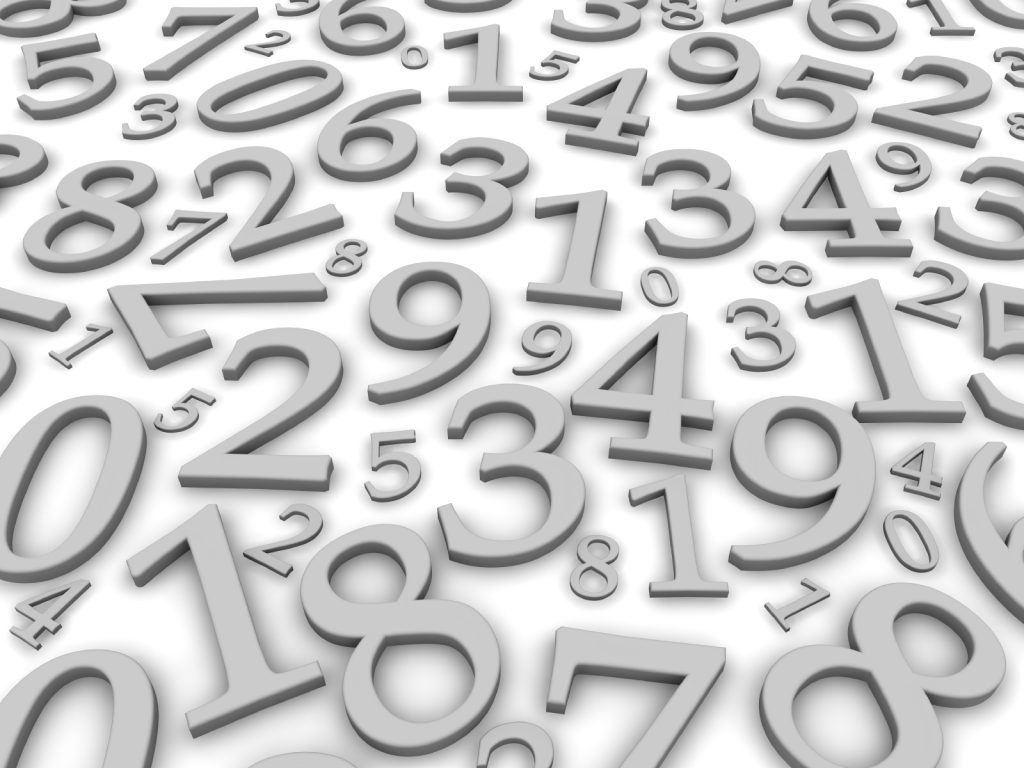
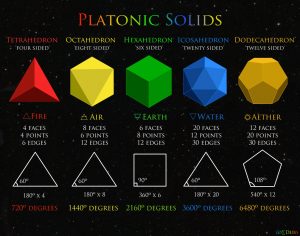
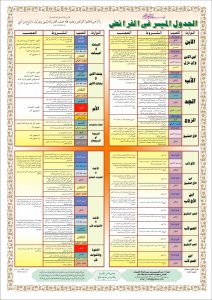

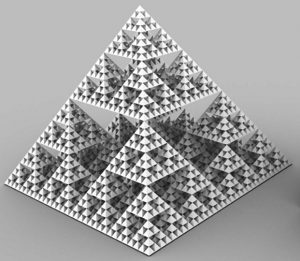

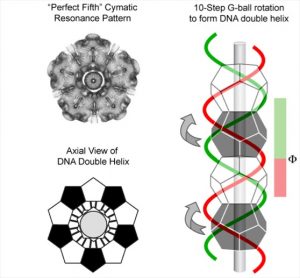
![A continued fraction approximation of Pi: [3; 7, 15, 1, 292, 1, 1, 2, ...] (Source)](/wp-content/uploads/2015/07/continued-fraction-pi-300x208.png)
